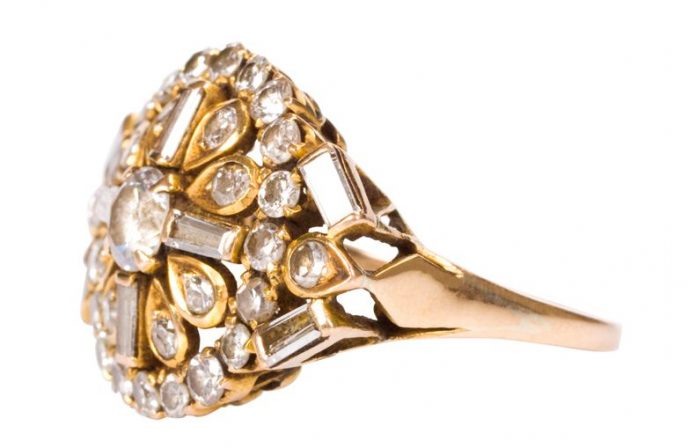Diamonds – their very mention makes the heart skip a beat.
Be it for the implied expectations or their possession’s sheer beauty and exquisiteness. However, purchasing a diamond can test the nerves of even the most astute buyer – what do you look for? What do the terms mean? What makes one diamond worth more than another?
Here is a simple guide to the essentials of diamond grading. Understanding these terms will help you discuss the most critical features with the dealer, ensuring you get the best diamond for your money.
Diamond appraisers look for four qualities in a diamond when discerning its value. Commonly called the ‘4 Cs,’ they are Cut, Clarity, Carat, and Color.
CUT
There are two aspects referred to when discussing the cut of a diamond. The first refers to the quality of the amount – affecting the brilliance of the diamond – the other refers to the actual shape of the diamond.
Diamonds are available in many shapes. Some of the More common are round, oval, pear (teardrop-shaped), heart, princess (square-shaped), Emerald (rectangular-shaped), marquise (football-shaped), and round.
Compared to other shapes, round diamonds stand out as the most radiant. How well a diamond reflects light determines its sparkle. A quality cut diamond will have facets angled to reflect the most significant amount of light. Beware of diamonds cut to maintain a higher carat weight while sacrificing the cutting of a good angle, dramatically reducing the brilliance.
CLARITY
Diamonds from natural sources are subject to individual flaws, including trace minerals and scratches. A diamond without such characteristics is called flawless and is the rarest kind. While these flaws are often not visible to the naked eye, they affect the light-reflecting qualities of the diamond, which affects the overall brilliance. Diamond clarity is Flawless, IF, VVS1, VVS2, VS1, VS2, SI1, SI2, SI3, I1, I2, and I3.
CARAT
Carat is the measurement of the weight of a diamond. ‘100 points’ is an alternative expression for the word ‘carat.’ To clarify, a diamond weighing 0.5 carats would be 50 points. The larger a diamond is, the more costly it becomes.
Since the larger diamonds are much rarer, the cost will increase significantly with each size increase. A one-carat diamond will be more than double the cost of a half-carat. However, a ring with multiple diamonds with a combined weight of one carat will be cheaper than a single stone.
COLOR
A diamond’s color is rated alphabetically from D to Z. A typical ‘white’ diamond should be as colorless as possible – a rating of ‘D’ is the rarest and most desirable. When choosing a colorless diamond, staying within the D-J range is best, or the diamond will have a yellow cast, which lessens the value.
The less natural color the diamond has, the more colors will appear in the flashes reflected in the prism. ‘Fancy ‘diamonds (with a rating over Z) come in various shades and famous diamonds, such as the Blue Hope diamond.
When purchasing a diamond, it is essential to Remember that each of the 4 Cs is equally important in an appraiser’s eyes. If budget is an issue, however, consider which features are most important to you and, with some knowledge, select the diamond that will hold the most incredible value and sentiment for your budget.

